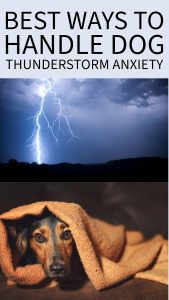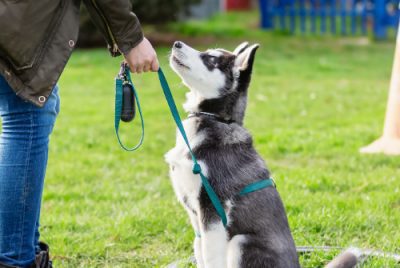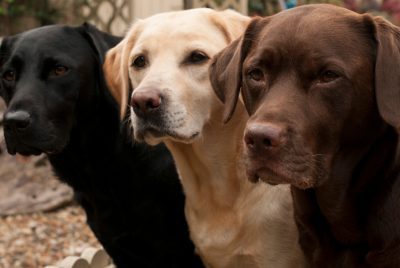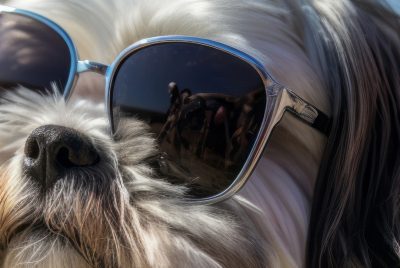Best Ways to Handle Dog Thunderstorm Anxiety: Expert Tips
Post Disclaimer
We may earn a commission for purchases made using our links. Please see our Disclaimer to learn more.
Thunderstorm Anxiety in Dogs: Best Handling Techniques
Why Do Dogs Get Scared of Thunderstorms?
Dogs can experience fear during thunderstorms because of the noise changes, air pressure, static electricity, and the flashes of lightning that accompany them. This fear response can lead to behaviors like trembling, hiding, or seeking comfort from their owners.
Dogs hold a place in our hearts as they provide joy, love, and companionship. However, they can also feel anxious when faced with thunderstorms due to the noises, bright lights, and atmospheric changes. This condition is known as “thunderstorm anxiety,” which can be distressing for dogs and their owners. This blog post will delve into strategies for managing thunderstorm anxiety in dogs. We will explore the science behind fear responses in dogs, identify signs of storm phobia in your dog, and discuss techniques to help them feel calm and secure during bad weather. By applying these methods and understanding their needs better during storms, we can provide a sense of safety for our pets.
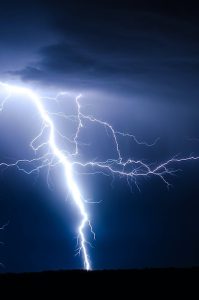
Understanding Thunderstorm Anxiety in Dogs
Before we learn how to handle thunderstorm anxiety in dogs, let’s understand what it is. During thunderstorms, storm phobia or thunderstorm anxiety is when dogs get scared and anxious. It is quite common, with up to 30% of dogs experiencing it. Dogs may show signs like shaking, restlessness, seeking a safe place, or fearful behavior. As owners, we must recognize these signs and help our furry friends cope with this fear.
The Science Behind the Fear
Thunderstorms can cause dogs to be scared. Dogs can sense static electricity in the air and changes in air pressure during thunderstorms. They can also feel anxious because of sounds like thunder and lightning flashes. Research shows that dogs are more sensitive to barometric pressure changes, making them more scared of thunderstorms.
Common Signs of Storm Phobia in Dogs
During a storm, dogs may show signs of thunderstorm anxiety. Watch for shaking, restlessness, and hiding. Pacing and panting are also common. Dogs may become hypersensitive to loud noises and seek reassurance. The intensity of storm phobia varies by dog. Some have mild anxiety, while others experience severe panic attacks. As dog owners, it’s important to notice these signs and provide comfort during storms.
Triggers of Thunderstorm Anxiety
Let’s discuss what makes dogs scared during thunderstorms. Thunder and bright lightning are the main culprits, along with changes in air pressure. These triggers can make dogs feel uncomfortable, afraid, and startled. Identifying these triggers can help calm our dogs during a thunderstorm by developing effective strategies to alleviate their anxiety.
The Noise of Thunder
How thunder affects dogs
Addressing dogs’ fear of thunder
Thunder can make dogs anxious. Loud noises from thunder can startle them, leading to fearful behavior. During a storm, dogs with thunderstorm anxiety may shake, pace, or seek comfort from their owners. Thunder’s noise can trigger a fight-or-flight response in dogs, making them anxious and unable to relax. To address this fear of thunder, it is important to create a calm environment using techniques that minimize loud sounds.
The Impact of Lightning Flashes
Thunder is a common fear trigger for dogs during storms. However, lightning flashes can also cause distress in dogs with storm phobia. This happens because sudden changes in lighting startle dogs, intensifying their anxiety levels. When coupled with thunder sounds, these visual stimuli can lead to fear and panic in dogs. We can help our dogs feel at ease during a storm by understanding how lightning triggers anxiety and using techniques to minimize its impact.
Sensitivity to Atmospheric Pressure Changes
In addition to the loud noises and lightning flashes, dogs with thunderstorm anxiety are also sensitive to changes in atmospheric pressure. As the air pressure drops during a storm, dogs can sense these changes, heightening their anxiety levels. The barometric pressure variations can create a sense of unease and exacerbate their fear of thunderstorms. Understanding this sensitivity allows us to implement techniques that address the anxiety associated with atmospheric pressure changes, providing a more calming and secure environment for our dogs during stormy weather.
Preparation: The Key to Handling Thunderstorm Anxiety
We now know more about dogs’ fear of thunderstorms. Let’s find out how we can help our furry friends. Preparing for a storm is important for both the dog and the owner. We can keep our dogs relaxed by being proactive and using calming strategies. Later, we’ll discuss training, safe spaces, and other helpful tools to ease storm anxiety.
Training Your Dog to Stay Calm During Storms
Training your dog to stay calm during thunderstorms is important for managing storm anxiety. Behavior modification techniques, like desensitization, can help dogs get used to the sounds and stimuli associated with thunderstorms. You can gradually expose your dog to recorded storm sounds at low volumes to reduce anxiety over time. During training sessions, it’s crucial to be calm and comforting, as this will reassure your dog. Consistency and positive reinforcement are necessary in teaching your dog that storm sounds are a part of their environment, not a threat.
Creating a Safe Space for Your Dog
Creating a safe space for your dog can provide security and comfort during thunderstorms. This designated area serves as a retreat where your dog can seek refuge from a storm’s loud noises and visual stimuli. Below are some key considerations when creating a safe space for your dog:
- Provide a crate, den, or a quiet room where your dog can feel secure and protected.
- Place your dog’s favorite blanket or bedding in the safe space to provide a familiar scent and additional comfort.
- Include their favorite toys or interactive puzzles to keep them engaged and distracted during the storm.
- Consider using a calming pheromone diffuser or spray to create a soothing environment for your dog.
- Use positive reinforcement by rewarding your dog with treats or praise when it retreats to its safe space during a thunderstorm.
Techniques to Calm Your Dog During a Thunderstorm
Training and creating a safe space are necessary to manage thunderstorm anxiety in dogs. Additional techniques can help calm and comfort anxious dogs during a storm. Engage your dog in physical activity before the storm hits. Use anxiety wraps or comforting garments to soothe them. Try to reduce noise and distractions around them to minimize their anxiety and fear during a thunderstorm.
Engagement in Physical Activity Before the Storm
Before a thunderstorm, it’s good to exercise with your dog to release energy and promote relaxation. A long walk or playing fetch can make them tired and more receptive to calming techniques during the storm. Meeting their needs enhances their well-being and helps them relax during the storm.
Utilizing Anxiety Wraps or Comforting Garments
Anxiety wraps, like thundershirts, can help calm anxious dogs during thunderstorms. They provide gentle, constant pressure that mimics the feeling of being held, giving the dog a sense of security and reassurance. The tight-fitting garment is often worn around the torso to reduce anxiety. It triggers a physiological response similar to being swaddled. Using anxiety wraps or other comforting garments, dog owners can soothe and reduce their anxious dogs’ stress during thunderstorms.
Reducing Noise and Distraction
To calm anxious dogs during thunderstorms, reducing noise and distractions is effective. By creating a quiet environment, we can minimize the impact of loud noises on our dogs. Here are some strategies to achieve a noise-free space:
- Use white noise or calming background noise like ocean waves to mask storm sounds.
- Play soft classical music that calms both humans and dogs.
- Close windows and doors to block thunder and rain sounds.
- Draw curtains or blinds to reduce lightning flashes.
- Provide your dog with a safe, soundproof area like a crate for solace from the storm.
Tools to Help Your Dog Cope with Thunderstorm Fear
To help dogs deal with thunderstorms, owners can use tools like Adaptil pheromones and distracting sounds. These tools can calm dogs and make them feel more secure during a storm. Along with training, creating a safe space, and calming techniques, these tools can reduce the impact of thunderstorm anxiety on dogs.
Use of Adaptil Pheromones
Adaptil pheromones can help manage thunderstorm anxiety in dogs. They mimic the calming scent of a mother dog and come in diffusers, sprays, and collars. These products reduce anxiety levels by creating a calming effect for dogs during thunderstorms. Make sure to consult with a veterinarian before using them on your dog. This ensures the best approach for your dog’s specific needs.
Providing Distracting Sounds
To help dogs cope with thunderstorm anxiety, provide distracting sounds that divert their attention from the storm. White noise machines, background noise, or calming music can mask the sounds of thunder and provide safety. By introducing these distracting sounds, dog owners can reduce the impact of the storm noises on their dogs. This helps dogs stay calm and focused on something other than the anxiety-inducing sounds of thunder and heavy rain.
Seeking Professional Help
If your dog is still struggling with thunderstorm anxiety, seeking professional help may be necessary. A veterinarian can give helpful advice on coping strategies for your dog during storms. The next sections will discuss when to consult a veterinarian and the available medication options for severe thunderstorm anxiety in dogs.
When to Consult a Veterinarian
If your dog is terrified of thunderstorms affecting their life, you should see a vet. The vet will check your dog’s behavior and health to find the best way to help them. They can guide you, make a plan for treatment, and suggest things that will work for your dog. It’s important to ask for a vet’s advice when you don’t know how to handle your dog’s anxiety because they know what to do. They can help both you and your dog in this tough time.
Medication Options for Severe Cases
If your dog has severe thunderstorm anxiety, medication may be needed as a final option. A vet can recommend benzodiazepines, antidepressants, or melatonin based on your dog’s needs. These medications can help reduce anxiety and promote relaxation during storms, relieving dogs with severe fear. Medication should only be given under the guidance of a vet to ensure appropriate dosage, potential side effects, and suitability for your dog’s condition.
Building Your Strategy to Manage Your Dog’s Thunderstorm Anxiety
As we approach the end of this blog, let’s reflect on the techniques and tools discussed to manage your dog’s thunderstorm anxiety. Owners can create a strategy that suits their dog’s needs by combining behavior modification, safe space creation, calming techniques, pheromones, distracting sounds, and medication (if necessary). This will provide care and support during thunderstorms.
Are There Other Ways to Help Your Dog Cope with Thunderstorm Anxiety?
Different dogs may need different approaches to manage thunderstorm anxiety. Some may like pressure wraps or relaxation techniques, while others may feel better with their owners, the internet, or TV. Dog owners must try various methods to find the best for their pups. A safe environment tailored to the dog’s needs can help them cope with thunderstorm anxiety. Lastly, offering reassurance and staying calm can also go a long way in keeping them relaxed during a storm.
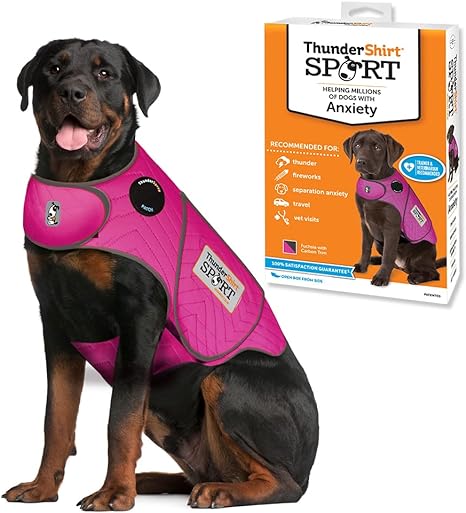
Conclusion
Understanding thunderstorm anxiety in dogs is important for their well-being and peace of mind. Recognize the signs and triggers of storm phobia to help your dog stay calm during thunderstorms. Preparation is key – train them to stay calm or create a safe space for them. Engage in physical activity, use anxiety wraps, and reduce noise. Adaptil pheromones and distracting sounds can also soothe their anxiety. Seek professional help from a veterinarian who can offer medication options and strategies. Let’s manage your dog’s thunderstorm anxiety together to ensure their well-being.
